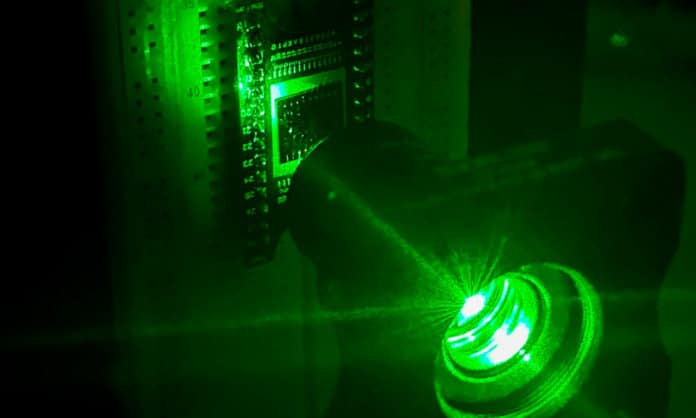Researchers have created a small device that sees and creates memories in a similar way to humans, in a promising step towards one day having applications that can make rapid, complex decisions, such as in self-driving cars.
The proof-of-concept neuromorphic device was developed by Australia’s RMIT University engineers, with contributions from researchers at Deakin University and the University of Melbourne.
The tiny device is a single chip-enabled by a sensing element, doped indium oxide, that is thousands of times thinner than a human hair and requires no external parts to operate. With precise engineering of the doped indium oxide, the device mimics a human eye‘s ability to capture light, pre-packages and transmits information like an optical nerve, and stores and classifies it in a memory system like the way our brains can. Collectively, these functions could enable ultra-fast decision-making based on what it sees.
“By contrast, digital processing is energy and carbon-intensive and inhibits rapid information gathering and processing,” first author and RMIT Ph.D. researcher Aishani Mazumder said. “Neuromorphic vision systems are designed to use similar analog processing to the human brain, which can greatly reduce the amount of energy needed to perform complex visual tasks compared with today’s technologies.”
The team shone ultraviolet (UV) light onto a pattern that was recognized and memorized by the device’s sensors. They found that their device could retain information for longer periods of time, compared to previously reported devices, without the need for frequent electrical signals to refresh the memory. This ability significantly reduces energy consumption and enhances the device’s performance.
The new device can perform all necessary functions, such as sensing, creating and processing information, and retaining memories, rather than relying on external energy-intensive computation, which prevents real-time decision-making.
“Performing all of these functions on one small device had proven to be a big challenge until now,” said Professor Sumeet Walia from the School of Engineering. “We’ve made real-time decision-making a possibility with our invention because it doesn’t need to process large amounts of irrelevant data, and it’s not being slowed down by data transfer to separate processors.”
Researchers are now working to expand this technology even further for visible and infrared light. The researchers consider the device useful for a range of applications such as bionic vision, autonomous operations in dangerous environments, shelf-life assessments of food, and advanced forensics.
“Imagine a self-driving car that can see and recognize objects on the road in the same way that a human driver can or being able to able to rapidly detect and track space junk. This would be possible with neuromorphic vision technology,” Walia said.
Journal reference:
- Aishani Mazumder, Chung Kim Nguyen, Thiha Aung, Mei Xian Low, Md. Ataur Rahman, Salvy P. Russo, Sherif Abdulkader Tawfik, Shifan Wang, James Bullock, Vaishnavi Krishnamurthi, Nitu Syed, Abhishek Ranjan, Ali Zavabeti, Irfan H. Abidi, Xiangyang Guo, Yongxiang Li, Taimur Ahmed, Torben Daeneke, Akram Al-Hourani, Sivacarendran Balendhran, Sumeet Walia. Long Duration Persistent Photocurrent in 3 nm Thin Doped Indium Oxide for Integrated Light Sensing and In-Sensor Neuromorphic Computation. Advanced Functional Materials, 2023; DOI: 10.1002/adfm.202303641
